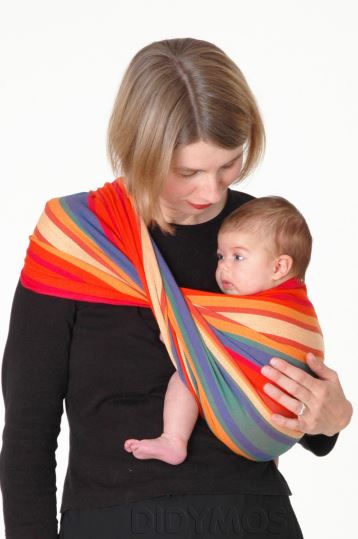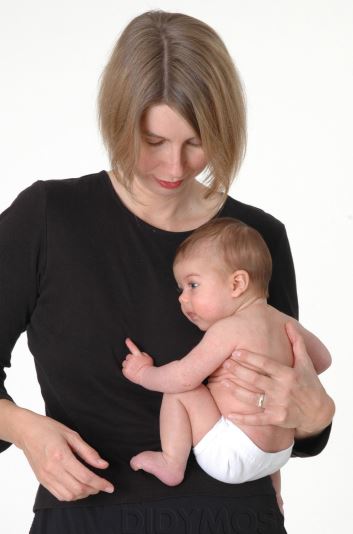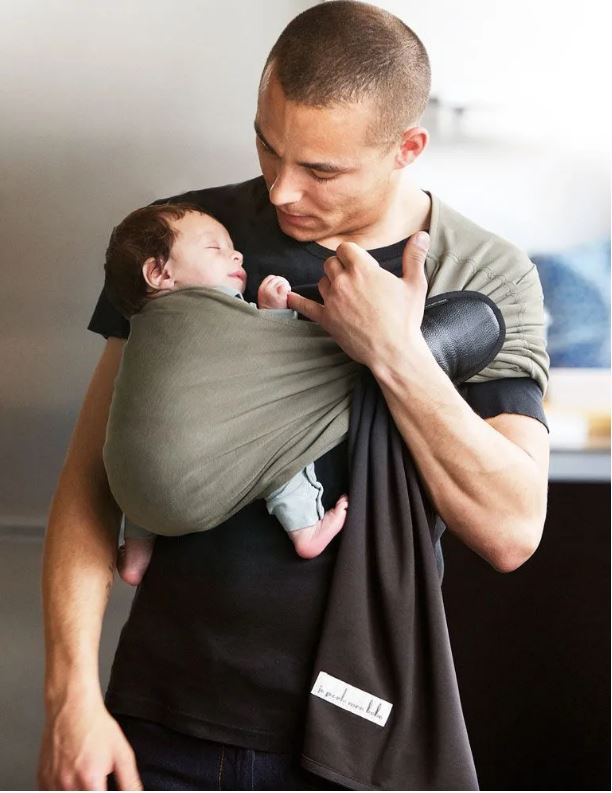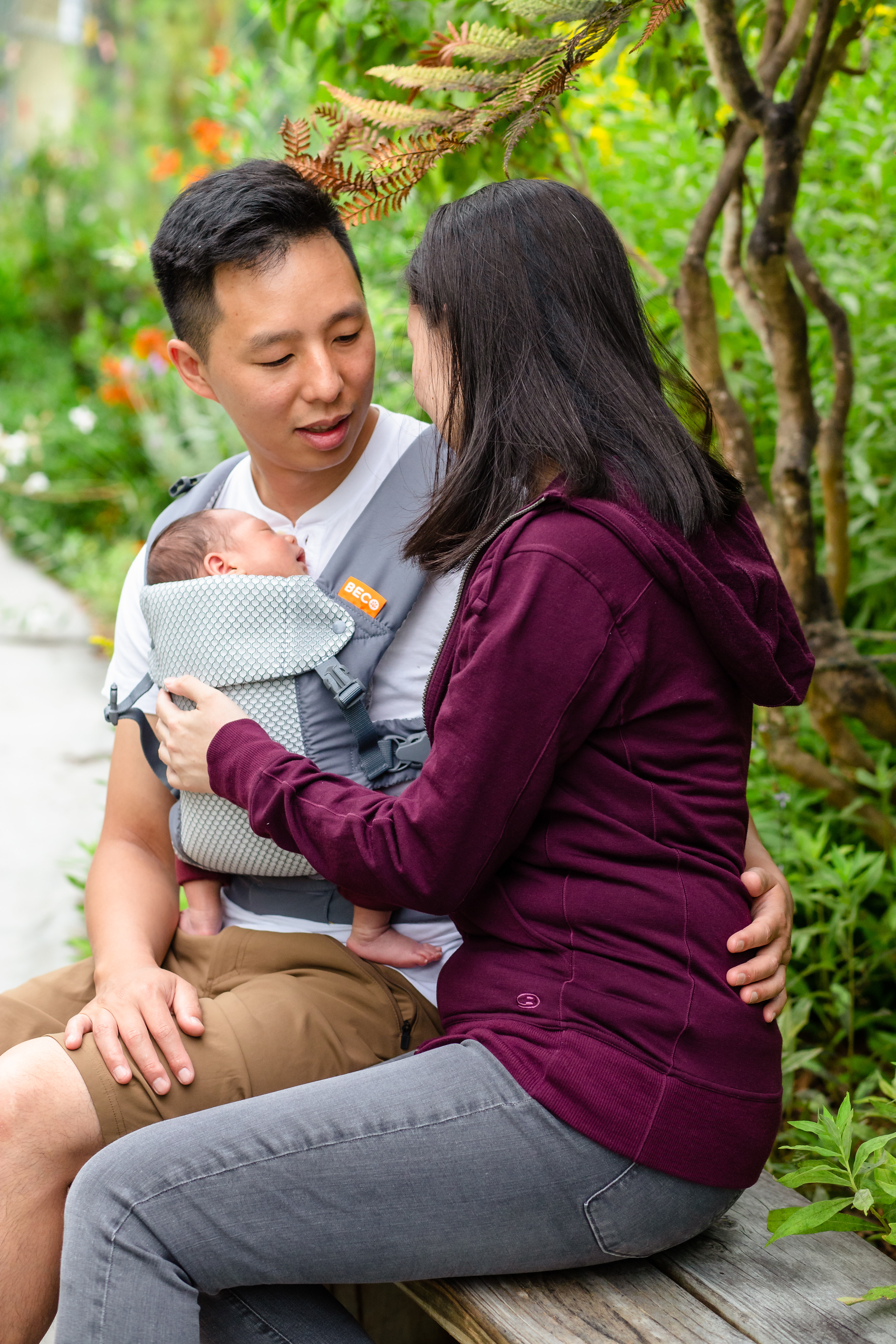Baby carriers are an essential tool for calming crying or getting a grizzly baby to nap. They are also perfect for places you can’t take a buggy, juggling 2 kids on an outing or just being hands free around the house.
But before you order a carrier being promoted on social media or the one your friend suggests, consider our expert advice:
The best carrier!
There are lots of different styles of carriers, however we think you'll find the 'best carrier' is one you love and that achieves all these points:
- Carrier allows for baby's back to be supported in its natural position.
- Carrier allows for the relaxed baby's legs to be in the spread-squat position.
- Carrier allows the wearer to distribute the baby's weight comfortably across their own body.
Thank you to Didymos for these wonderful images which show the 'Spread Squat' position and the Love Radius Little Wrap without a Knot shows the position too.



Shopping tips
Different carriers are more suitable for babies of different ages. Many carriers now are promoted as being suitable from newborn right through to toddler, but for many this is more marketing than a really comfortable fit for a newborn. And many of these one size fits all carriers are very bulky and swallow up your newborn unless you are very knowledgeable about how to tweak the carrier for a really safe fit.
So if you choose to buy a one size fits all children carrier, be aware that this will mean some sort of compromise - are you happy compromising on the fit when your baby is a newborn or that it might get to be too small at the other end? A great solution is to get a Boba Wrap or ring sling for your newborn and a buckle carrier that fits well from a few months old.
All retailers should offer knowledgeable advice before purchase and after sales service to help ensure you can use your carrier safety and comfortably.Consider which adults will be wearing the carrier and whether the carrier can be easily adjusted between them. Buying a carrier is a bit like buying jeans, they fit everyone differently.
If you are trying on a carrier instore, the retailer should offer a demo doll for ease of trying on. They should be particularly knowledgeable about the safety of the carrier and how to position your baby to ensure their airways are clear and baby can't fall out.
If you are buying a carrier online, ensure that you can return it for an exchange or refund if does not fit you and your baby comfortably.
Some specialist carrier retailers offer fittings or carrier rental before you purchase. You can also seek advice from certified babywearing consultants or experienced baby carrier users at your local sling group.
 Types of carriers
Types of carriers
See our 'Types of Baby Carriers' page for descriptions:
- Ergonomic Soft structured carrier
- Meh Dai
- Ring Sling
- Stretchy Wrap
- Long Woven Wrap
- Short Woven Wrap
What to look for when choosing your carrier
If you're choosing a baby carrier, here's what to consider.
- Make sure the carrier’s suitable for your child — check the recommended age and weight. Does it need an infant insert to fit a newborn? While many carriers are advertised as one size fits all, they are often a better fit from about 6 months old.
- Supportive padded or wide shoulder straps will help distribute the baby’s weight. Many parents find crossable straps are even more comfortable. The straps shouldn’t pull on your neck or shoulders. A supportive waist-band will take some weight off your shoulders.
- Shoulder straps should be easily adjustable and shouldn’t obscure a baby’s vision or cut into their face. The top of the panel shouldn’t go above the bottom of their ears or cover their face. If the baby is positioned correctly, they will not need head support.
- Clips and buckles are usually easier to do up and release than straps that tie up. Although ties are more adjustable and easier to swap between users. Buckles are also the part of a carrier that may fail over time or be damaged by something like a dog chewing it or being shut in the car door!
- The carrier should firmly baby in a safe and ergonomic position. Hips should be in a healthy position with knees higher than bottom and the carrier should be positioned at the top of baby’s neck.
- Construction and materials should be comfortable for the baby. Breathable fabrics help keep baby cool in summer (but you’ll need to dress baby warmly in cooler weather).
- Instructions should be clear and concise — especially if you haven’t used a baby carrier before. Step by step instructions with photos are helpful. YouTube is great for demonstrations though check the source is a trained babywearing educator.
- The majority of carriers are easily machine washable. Be wary of carriers that suggest spot-cleaning only as this won’t be sufficient after a nappy explosion!
